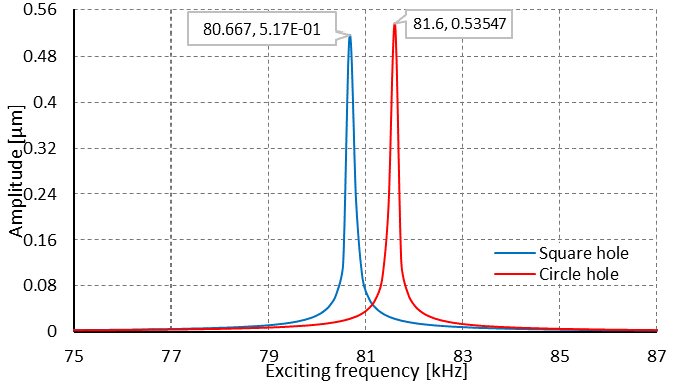Dynamic response of the micro-perforated crab beam used in MEMS vibratory gyroscope device
Author affiliations
DOI:
https://doi.org/10.15625/0866-7136/19477Keywords:
cut-out hole, mechanical respons, micro crab beam, MEMSAbstract
This paper presents a study on the dynamic response of the micro-beams with the crab shape and cut-out holes on the whole operating faces of the beam to create the micro-perforated beam by using FEM simulation software. The obtained results show that the size and shape form of the cut-out holes affect the mechanical responses of the beam on which the holes distribute. The equivalent stiffness of perforated micro-beams decreases significantly with the increasing size of the holes on the beam operating face. And thence the major frequencies of the MEMS vibratory gyroscope system that consist of these micro-beams also decrease. The results of the study are basic for being used for optimizing the structure in subsequent research.
Downloads
References
D. Van Hieu, L. Van Tam, N. Van Duong, N. Duy Vy, and C. Manh Hoang. Design and simulation analysis of A Z axis microactuator with low mode cross-talk. Journal of Mechanics, 36, (2020), pp. 881–888.
H. Din, F. Iqbal, and B. Lee. Modelling and optimization of single drive 3-axis MEMS gyroscope. Microsystem Technologies, 26, (2020), pp. 2869–2877.
V. T. Vu and D. T. Chu. Determine the dynamic parameters in mechanical system of the crab-shaped MEMS vibratory gyroscope. Microsystem Technologies, 27, (2021), pp. 3429–3435.
S. E. Alper and T. Akin. Symmetrical and decoupled nickel microgyroscope on insulating substrate. Sensors and Actuators A: Physical, 115, (2004), pp. 336–350.
K. T. Hoang, D. T. Nguyen, and P. H. Pham. Impact of design parameters on working stability of the electrothermal V-shaped actuator. Microsystem Technologies, 26, (2019), pp. 1479–1487.
K. Guha, H. Dutta, J. Sateesh, S. Baishya, and K. Srinivasa Rao. Design and analysis of perforated MEMS resonator. Microsystem Technologies, 27, (2018), pp. 613–617.
K. Guha, N. M. Laskar, H. J. Gogoi, K. L. Baishnab, and K. S. Rao. A new analytical model for switching time of a perforated MEMS switch. Microsystem Technologies, 26, (2018), pp. 3143–3152.
M. A. Alazwari, A. A. Abdelrahman, A. Wagih, M. A. Eltaher, and H. E. Abd-El-Mottaleb. Static analysis of cutout microstructures incorporating the microstructure and surface effects. Steel and Composite Structures, 38, (5), (2021), pp. 583–597.
K. Guha, N. M. Laskar, H. J. Gogoi, S. Chanda, K. L. Baishnab, K. S. Rao, and N. P. Maity. An improved analytical model for static pull-in voltage of a flexured MEMS switch. Microsystem Technologies, 26, (2018), pp. 3213–3227.
L. Luschi and F. Pieri. An analytical model for the determination of resonance frequencies of perforated beams. Journal of Micromechanics and Microengineering, 24, (2014).
T. Ozaki, N. Ohta, and M. Fujiyoshi. Analytical modeling of a MEMS beam resonator with release-etch holes. Journal of Micromechanics and Microengineering, 32, (2022).
S. M. Han, H. Benaroya, and T. Wei. Dynamics of transversely vibrating beams using four engineering theories. Journal of Sound and Vibration, 225, (1999), pp. 935–988.
Y. Song, T. Kim, and U. Lee. Vibration of a beam subjected to a moving force: Frequency-domain spectral element modeling and analysis. International Journal of Mechanical Sciences, 113, (2016), pp. 162–174.
A. A. Abdelrahman, M. A. Eltaher, A. M. Kabeel, A. M. Abdraboh, and A. A. Hendi. Free and forced analysis of perforated beams. Steel and Composite Structures, 31, (5), (2019).

Downloads
Published
How to Cite
Issue
Section
Categories
License

This work is licensed under a Creative Commons Attribution-ShareAlike 4.0 International License.









